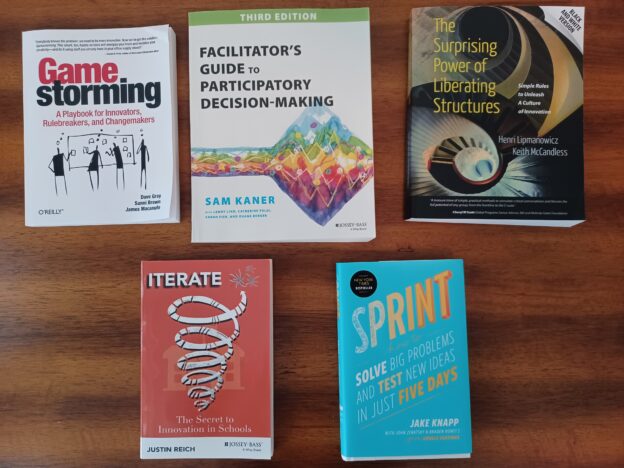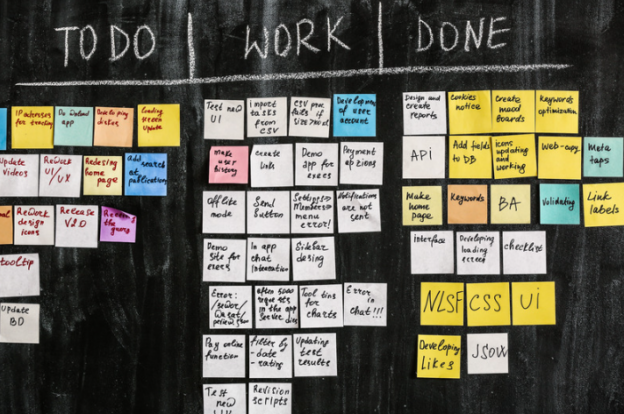In the fast-paced world of software development, the Scrum Master is a key figure who helps teams navigate complex projects and deliver results efficiently.
The Scrum Master acts as a facilitator, coach, and problem-solver, ensuring that everyone is aligned, motivated, and working towards a common goal.
A Principal reading this description might think, “that’s exactly what I do everyday.” The role of a school Principal shares many similarities with that of a Scrum Master.
The term “Scrum Master” comes from the sport of rugby. In rugby, a scrum is a formation where players huddle together and push forward as a team. It looks like organized chaos. Just like in a rugby scrum, a Scrum Master helps their team work together effectively to achieve their goals.
The idea of the orderly mayhem of a rugby scrum, pushing the pile forward resonated with my time as a school leader. The Principal role is more complex than ever before. They’re not only tasked with managing day-to-day operations but also with driving innovation and change to ensure students are prepared for the future. This requires a shift in leadership style, one that embraces agility and adaptability.
Agile project management, a methodology born in the software development world, offers a framework for navigating this complexity. And at the heart of agile is the Scrum Master, a servant leader who facilitates collaboration, empowers teams, and removes roadblocks to progress.
It’s no surprise then that school Principals share a number of similarities with Scrum Masters.
- Facilitating Collaboration
-
- Scrum Master: Fosters a collaborative environment where team members feel safe to share ideas and contribute to solutions.
- School Principal: Encourages and facilitates communication and collaboration among diverse stakeholders (teachers, staff, students, parents, unions, school boards, community members).
- Empowering Teams
-
- Scrum Master: Empowers the team to self-organize and make decisions.
- School Principal: Empowers teachers to take ownership of their classrooms and create innovative learning experiences.
- Removing Roadblocks
-
- Scrum Master: Identifies and removes obstacles that prevent the team from making progress.
- School Principal: Addresses challenges that hinder teaching and learning, such as resource constraints, behavioral issues, or bureaucratic hurdles.
- Promoting Continuous Improvement
-
- Scrum Master: Facilitates regular retrospectives to reflect on what’s working and what can be improved.
- School Principal: Encourages ongoing professional development and data-driven decision making to continuously improve teaching and learning.
- Servant Leadership
-
- Scrum Master: Serves the team by providing support, guidance, and resources.
- School Principal: Serves the school community by prioritizing the needs of students and creating a positive learning environment.
Applying Agile Principles in Education
By adopting an agile mindset and embracing the role of a Scrum Master, school Principals can lead their schools towards greater agility and innovation. This involves:
- Breaking down large initiatives into smaller, manageable projects.
- Establishing a system for tracking and monitoring key processes.
- Empowering teachers to collaborate and experiment.
- Using data to track progress and make adjustments.
- Celebrating successes and learning from failures.
- Setting clear goals and prioritizing tasks.
Agile project management offers a powerful tool for school leaders to navigate the complexities of modern education.
Just like a Scrum Master, a Principal’s ultimate goal is to create an environment where everyone feels empowered to contribute their best and achieve their full potential. By embracing agile principles, school leaders can foster a culture of continuous improvement and innovation, preparing students for success in an ever-changing world.
Posted by: Greg Runyan
Greg is an innovative professional with broad-based expertise in teaching and educational administration. Throughout his 20 years in the classroom and as a school and district administrator he has sought to foster new approaches to improving student engagement and learning.
Greg founded Pioneer Ed Strategies to bring best practices for solving problems from the tech and design industries to address the challenges facing schools today. His mission is to help school leaders implement creative solutions that enhance teaching and learning.




